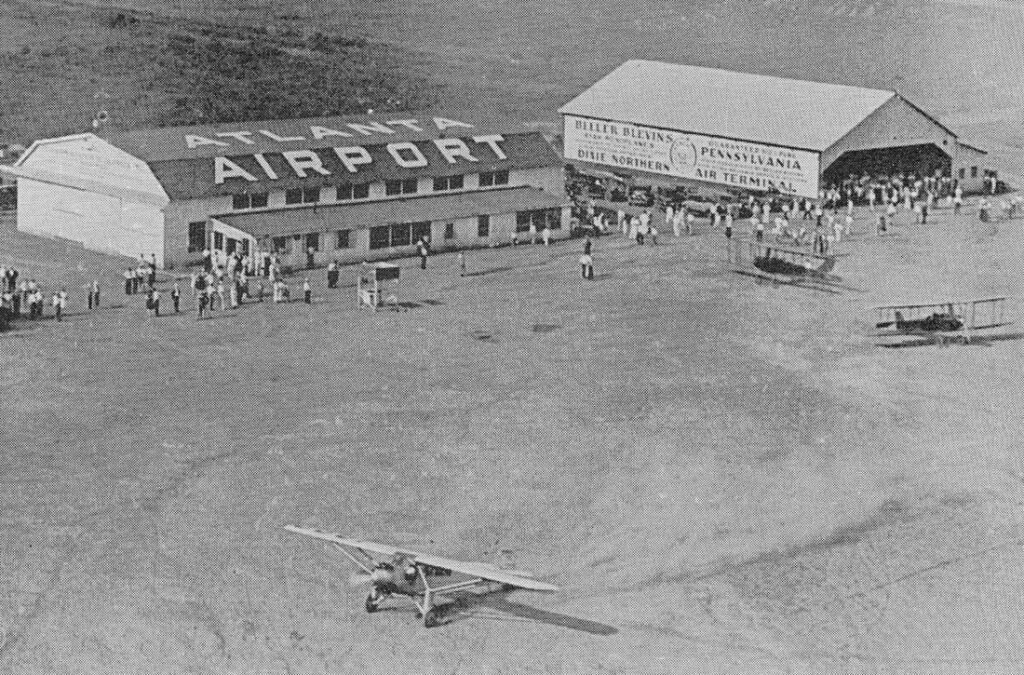Hartsfield-Jackson Atlanta International Airport, known today as one of the world’s busiest and most influential airports, had modest beginnings that date back to the early 20th century. This article takes a journey back in time to explore the roots and early development of Atlanta’s aviation hub.

A Modest Start in Candler Field
The history of Atlanta’s aviation industry can be traced back to the 1920s when Candler Field, a small airfield located in the southwestern part of the city, was established. In 1925, this airfield became the first municipal airport in the United States. It was named after former Atlanta mayor and Coca-Cola magnate Asa Candler, who played a significant role in its establishment.
Pioneering Spirit and Growth
During its early years, Candler Field was primarily a dirt airstrip with minimal facilities. However, it quickly gained popularity as a stop for mail and passenger flights. Airlines such as Delta Air Service (now Delta Air Lines) and Eastern Air Transport (later Eastern Airlines) operated here, pioneering a new era of aviation in Atlanta.
The Shift to Hartsfield-Jackson
In 1941, the airport was renamed Atlanta Municipal Airport, and it underwent significant expansion and modernization. Runways were paved, terminals were built, and facilities were improved. In 1957, the airport was again renamed in honor of William B. Hartsfield, Atlanta’s longest-serving mayor, and Maynard Jackson, the city’s first African American mayor. This merger of names created Hartsfield-Jackson Atlanta International Airport, symbolizing the city’s commitment to growth and inclusion.
Atlanta’s Emergence as a Major Aviation Hub
Throughout the mid-20th century, Hartsfield-Jackson continued to grow. It became a major connecting hub for flights across the United States. The airport’s strategic location made it an ideal transfer point for travelers, and the city’s welcoming atmosphere earned it a reputation as “The World’s Busiest Passenger Airport.”
The Modern Era
Today, Hartsfield-Jackson Atlanta International Airport is a global aviation giant, serving as a hub for countless domestic and international flights. Its extensive network of runways, terminals, and concourses accommodates millions of passengers each year. The airport has consistently ranked as the world’s busiest airport by passenger traffic and takeoffs and landings, a testament to its enduring significance in the world of aviation.
The story of Hartsfield-Jackson Atlanta International Airport is one of growth, innovation, and ambition. From its humble beginnings as Candler Field to its current status as a global aviation powerhouse, the airport’s history reflects the spirit of Atlanta itself—a city that has always looked to the skies and embraced the possibilities of the future. Today, it stands as a symbol of progress and connectivity, linking Atlanta with the world and contributing to the city’s enduring legacy in the world of aviation.
How Did Candler Field Transition to a Major Airport?
Answer: Candler Field transitioned into a major airport through a series of expansions and modernizations. The city of Atlanta recognized the potential of air travel and invested in infrastructure, including paved runways and terminal buildings. This development, coupled with Atlanta’s strategic location, helped the airport grow into a major aviation hub.
What Role Did Atlanta’s Mayors Play in the Airport’s Development?
Answer: Atlanta’s mayors, particularly William B. Hartsfield and Maynard Jackson, played crucial roles. Hartsfield was a strong advocate for aviation and worked tirelessly to promote the airport’s growth. Jackson, on the other hand, focused on inclusivity and expansion, ensuring the airport served as a gateway for all, which led to the airport being named after both mayors.
How Did Hartsfield-Jackson Maintain Its Status as the World’s Busiest Airport?
Answer: Hartsfield-Jackson maintained its status through continuous expansion, efficient operations, and strategic partnerships with airlines. Its location also played a key role, as it’s within a two-hour flight of 80% of the U.S. population, making it an ideal hub for both domestic and international flights.
What Were Some Key Milestones in the Airport’s History?
Answer: Key milestones include its establishment as Candler Field in the 1920s, the transition to Atlanta Municipal Airport with modern facilities in the 1940s, and its renaming to Hartsfield-Jackson Atlanta International Airport. The continuous expansion of runways and terminals to accommodate growing passenger traffic was also significant.
How Has the Airport Impacted Atlanta’s Economy?
Answer: The airport has had a profound impact on Atlanta’s economy. It has created jobs, stimulated growth in the tourism sector, and attracted businesses and events to the city. The airport’s role as a major logistics and transportation hub has also made Atlanta a key player in global commerce.
The evolution of Atlanta’s airport from Candler Field to Hartsfield-Jackson Atlanta International Airport is a story of vision, growth, and strategic development. It reflects not just the history of aviation but also the dynamic progress of Atlanta as a city at the forefront of global connectivity and innovation.
As an Amazon Associate we earn from qualifying purchases through some links in our articles.




